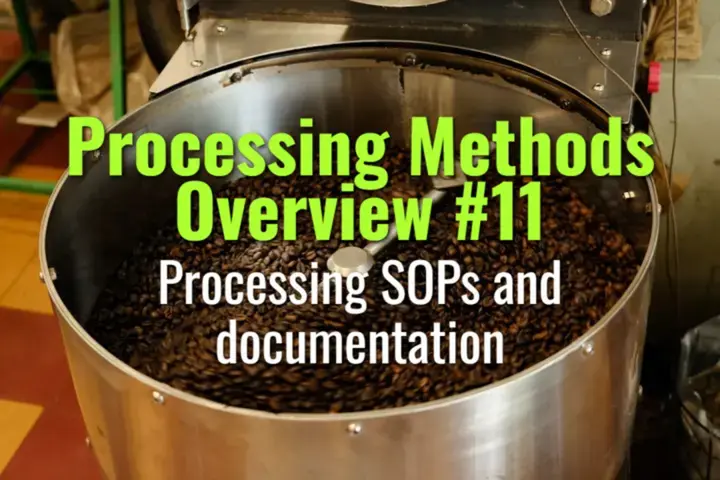Processing SOPs and documentation
This topic explains the role of standard operating procedures (SOPs) and documentation in coffee processing, showing how they ensure consistency, traceability, and quality control across farms and mills.
- Coffee Basics Nerds
- 2 min read
Article 11 of 12 in Processing Methods Overview/

Why SOPs and Documentation Matter
- Coffee processing involves many variables (fermentation time, drying method, moisture levels).
- Without SOPs, results vary widely, reducing consistency.
- Documentation allows producers to replicate successful methods, meet certification requirements, and provide transparency to buyers.
Processing SOPs (Standard Operating Procedures)
- Definition: Step-by-step instructions that standardize each stage of processing.
- Examples:
- Cherry reception: sorting, float test procedures.
- Fermentation: target temperature, duration, endpoint (pH or tactile check).
- Washing: water quality standards, cleaning intervals.
- Drying: thickness of layers, turning frequency, target moisture (10–12%).
- Storage: bag type, warehouse ventilation, pest control measures.
- Benefits:
- Ensures workers follow best practices.
- Reduces errors and defects.
- Improves training of seasonal labor.
Documentation Practices
- Lot tracking: Assigning codes to lots by farm, date, and processing method.
- Data collection: Recording cherry weight, fermentation time, drying duration, moisture readings.
- Quality logs: Linking processing details to cupping results.
- Traceability records: Needed for certifications (Organic, Fairtrade, Rainforest Alliance).
Tools for Documentation
- Paper logbooks and checklists.
- Digital spreadsheets or mobile farm apps.
- Cooperative or exporter-level data management systems.
Benefits of Documentation
- Consistency: Enables replication of high-scoring lots.
- Transparency: Builds buyer trust and justifies premium pricing.
- Problem-solving: Identifies causes of defects by tracing back steps.
- Market differentiation: Buyers value detailed processing records.
Challenges
- Smallholders may lack literacy or training for detailed documentation.
- Requires extra labor during busy harvest periods.
- Digital systems need investment in infrastructure.
Lasting Importance
Processing SOPs and documentation transform coffee from an art based on tradition into a science based on repeatability and accountability. They provide farmers and mills with the tools to control quality, maintain traceability, and compete successfully in specialty markets.
You might also like:
- Tags:
- Lasting Importance
- Best Practices
- Specialty Markets
- Rainforest Alliance
- Water Quality
- Organic Fairtrade
- Processing Method
- Step Step
- Matter Coffee
- Turning Frequency
- Coffee Processing
- Certifications Organic
- Target Moisture
- Fairtrade Rainforest
- Cupping Results
- Buyer Trust
- Quality Standards
- Premium Pricing
- Pest Control
- Operating Procedures
- Standard Operating
- Market Differentiation
- Traceability Records
- Moisture Levels
- Moisture Readings